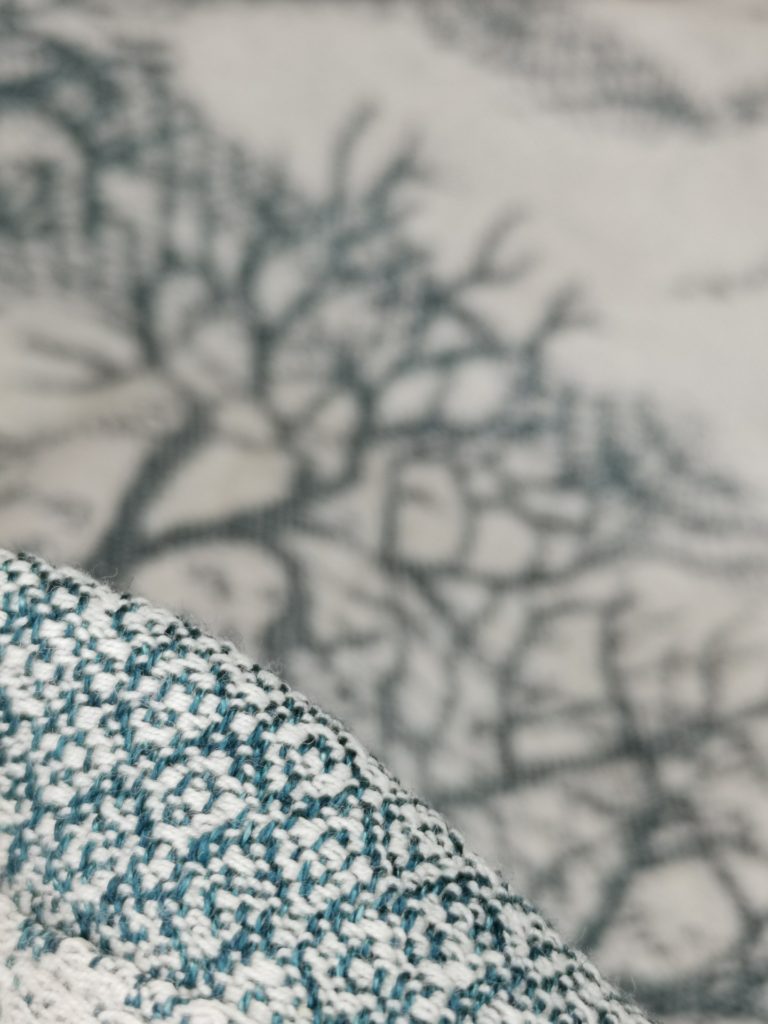Understanding and Caring for Wraps
Weavers’ knots: What they are and what to do with them
Here’s a video explaining what weavers’ knots are, and what to do with them. The audio from the video is transcribed below.
Weavers’ knots: what they look like, why they’re there and what to do about them!
In this Waterwitch Cirrus Murmuration there is a tiny knot in the teal coloured weft.
This originates from back when this yarn was still wound on a cone.
All the yarn on the cone is a completely continuous length, and it needs to be so that when it is on the loom, the yarn is under tension, and can woven back and forth. Each cone has a measured amount of yarn on it, and so when one piece finishes, the next is knotted into it. They’re a normal part of working with natural fibre threads.
Once the cloth has been woven it has a completely different structure. It is unlike jersey/knitted fabric, which is formed by a series of loops and will unravel if the yarn is cut. The structure of Jacquard woven cloth comes from the interlacing of warp and weft thread, and once they’ve been woven in place, each thread is completely secure within the fabric. The threads are holing each other in place and they don’t need to be attached to each other, or to be one continuous length.
This means that the knot is now just a remnant of a previous part of the process, and isn’t really serving a function any more. It did its job when the yarn needed to be pulled taut, but now it isn’t holding anything in place, and it doesn’t need to be here.
There is no reason to remove the knot if it doesn’t bother you- it isn’t causing any problems, but similarly there is no danger at all in removing it, and that is an incredibly simple process.
To remove, all you need to do is snip this little knot out, and that’s it! It doesn’t need anything else doing to it to secure it- it is already perfectly secure. It can’t create a hole or unravel, or even move anywhere. The two cut ends will just settle and disappear into the cloth- they don’t need securing to anything else because they are already perfectly secure. If you really wanted to, you could gently pull one the ends to gather some of the slack that is woven into each thread to make them a little longer. You could then use a needle to pull the ends through the cloth and cross past each other where the knot would have been (so now you have two threads overlapping). There’s no real reason to do this though- it is a technique that you might use for thicker threads, but the yarn in machine woven wraps is so fine that each one is barely perceptible on its own.
So to recap: The knot is just a remnant of an earlier part of the weaving process, but is now redundant. You can leave it as it is and enjoy the human history behind your wrap (someone stood and tied that knot at some point) or simply snip it out with a pair of scissors and then leave it alone. You’ll not be able to ever find it again!
